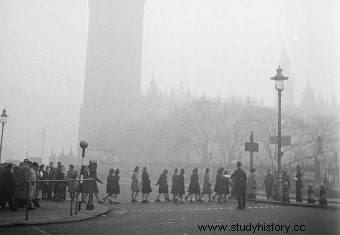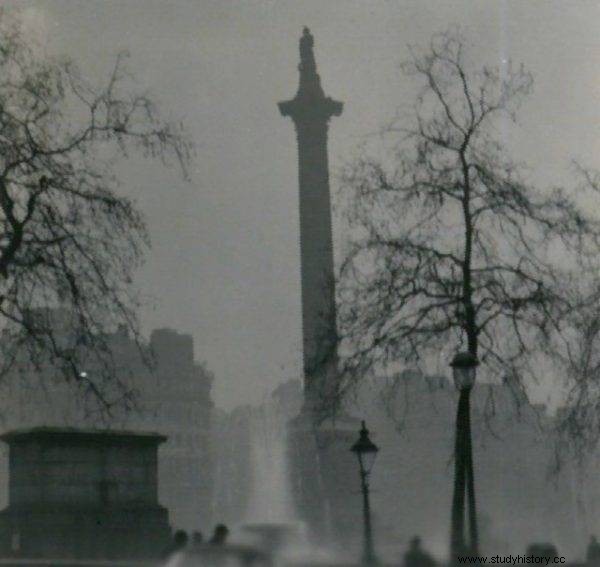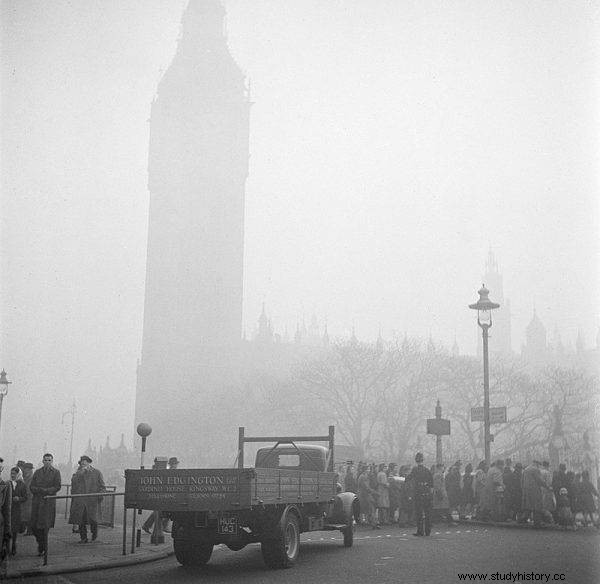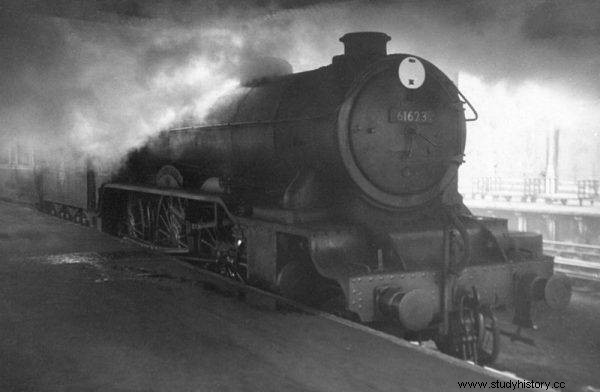Fog, darkness and smoke. The choking, throat-aching air. Difficulty every time you try to draw air into your lungs. Dirty and irritated eyes. The all-consuming stench of heavy metals. It has been known for a long time that smog kills. In London in December 1952 he took a particularly tragic toll ...
Smog is well known to us today. Many cities around the world are struggling with this phenomenon; some are better, but most are worse. This is by no means a new problem. It was known already in antiquity.
A brief history of smog
Even then, attention was drawn to the strange smell of the air. For this reason, in Rome in the first century C.E. glass production was moved to the suburbs. Seneca the Younger described in his letters unpleasant odors and the "heaviness" of the aura (eventually he left the city on the advice of a doctor). An interesting mention of smog is the account of the Jewish physician Moshe Maimonides, who documented the negative impact of "dirty air" on the health of children in Cairo in the 12th century.

Smog has been a huge problem in London for years (in the photo in the background, the outline of Big Ben is barely visible due to the polluted fog). In 1952 it took a particularly deadly harvest.
In England, hard coal quickly began to replace wood (it was associated with a significant deforestation). It was used, among others, by for the production of glass, iron, steel and ceramics. Along with the burning of coal, smog appeared.
British cities were quite often haunted by fog - it was not a new phenomenon. With the beginning of the industrial revolution, fogs began to occur noticeably more. Industrial plants released poisonous gases and pollutants into the atmosphere, which quickly led to a disaster.
The omnipresent smoking chimneys dominate the landscape. The impurities stuck to the water molecules to form smog - a thick, dirty (yellow or brownish) fog with a characteristic odor.

Nelson's Column during the great smog
Cases of smog occurrence were recorded for most of the 19th century - mainly in cities that were densely built-up, with factories and industrial plants operating in their immediate vicinity. In the 1870s, the mortality rate in London increased by almost 50%.
Cold December in London
The problem was disregarded for a long time - until 1952, when it was no longer possible to pretend it didn't exist. It was then that a tragedy took place in the capital of England. How did it happen?
December was approaching and the air temperature was dropping day by day. Most Londoners have started to heat their homes. Already at the beginning of the last month of the unfortunate year, London was hit by fog (this time completely natural), which led to a significant cooling down, so the demand for heat in households grew. It should be noted that the coal used by Londoners was not of the best quality - it contained a lot of impurities (mainly sulfur compounds).

In a tragedy in 1952, environmental pollution was seriously dealt with in Great Britain.
Winter turned out to be harsh; frost and snowfall continued for a long time. Unfortunately for the inhabitants, there was a temperature inversion above the city - the air closer to the ground was cooler than the air above. Thus, the warm smoke from burning coal could not rise and dissipate into the atmosphere. Any contamination from the chimneys of factories or apartments has been trapped at a height of 100 to 200 meters from street level. Although it was not only the chimneys that caused the great smog to appear. Diesel cars and buses as well as steam locomotives were also a big problem.
On the night of December 4, London found itself under the influence of a high pressure system (the aforementioned temperature inversion). The next day, water vapor began to condense in the cold, ground-level air, forming a fog so dense that visibility dropped to several meters.
Great smog
Most Londoners this morning were hardly surprised by the view outside (though the darkness of the streets might have been puzzled). Fogs were common there. Unfortunately, the windless weather made it impossible to disperse the one that hit the city on December 5, 1952.
Although at first there was no sign of a tragedy, the seriousness of the situation was quickly realized. Many people went to hospitals with respiratory problems, many died. Some died… in car and rail accidents because visibility was really minimal. A doctor from a hospital near Tottenham Court Road in the center, Donald Acheson, described years later:
I remember being completely confused as I was in a part of London that I knew very well. I had to walk, holding on to the wall to the intersection, to see the street sign. I don't remember the smell of smog, but I remember the terrifying silence, there was practically no traffic on the street. Visibility was less than three meters and it was very cold.

Steam locomotives contributed significantly to the intensification of the smog.
Public transport stopped working (only the metro was functioning). School activities and public events were canceled, and the city was completely paralyzed. Thousands of people began to experience health problems. The high concentration of sulfur dioxide in the atmosphere caused damage to the lungs and bronchi. Mortality increased sharply. Most of the deaths were due to respiratory infections, hypoxia, and asphyxiation from excessive mucus production:
(...) I perfectly remember that our mother put a wet handkerchief over our nose and mouth and fastened it with a scarf. By the time we got to the school, the handkerchief was heavily stained with a dark brown substance (…).
Clean Air Act
These few days of December 1952 brought a tragedy, but also a breakthrough. It was realized that what happened to London was not just a fog. That the problem may escalate in the future. The number of sick people in the packed hospitals, the dead and those injured in accidents was also impressive.
Although most scientific studies on smog have been presented before, none of the politicians took them seriously. It was not until 1956 that the law - Clean Air Act - was passed, which introduced several effective solutions in the fight against air pollution.
The so-called Clean Air Council was established, whose task was to monitor the level of pollution and work to eliminate smog. It was also ordered to install devices in the city that would be able to make appropriate measurements, and to increase the height of chimneys in large industrial plants.
Efforts were made to minimize the emission of toxins from industrial furnaces by using special filters. In some places it was possible to create the so-called "Smoke-free zones", offering full funding for the replacement of furnaces and fuels. It was also forbidden to release smoke into the atmosphere, which would have a "second shade" of gray on the so-called Ringelmann scale (or darker). This was assessed using special cards showing the color of the smoke and the corresponding percentage of pollution.
These solutions significantly improved the standard of living in Great Britain - thanks to them, it was possible to reduce the level of harmful gas emissions (it is worth remembering, however, that it was not a 100% success). The price paid for it, however, was enormous. It is estimated that 4,000 people died during the great London smog, and as a result of complications and diseases in the coming weeks, another 8,000. In total, the killer fog claimed about 12,000 victims.
Bibliography:
- Brimblecombe P., The Big Smoke:a history of air pollution in London since medieval Times , 1987.
- Greater London Authority, 50 years on. The struggle for air quality in London since the great smog of December 1952 , London 2002.
- Kleczkowski P., Smog in Poland . Causes, Effects, Countermeasures , Warsaw 2020.
- - Your memories of the 1952 great smog, The Guardian [accessed on 23/01/2021].
